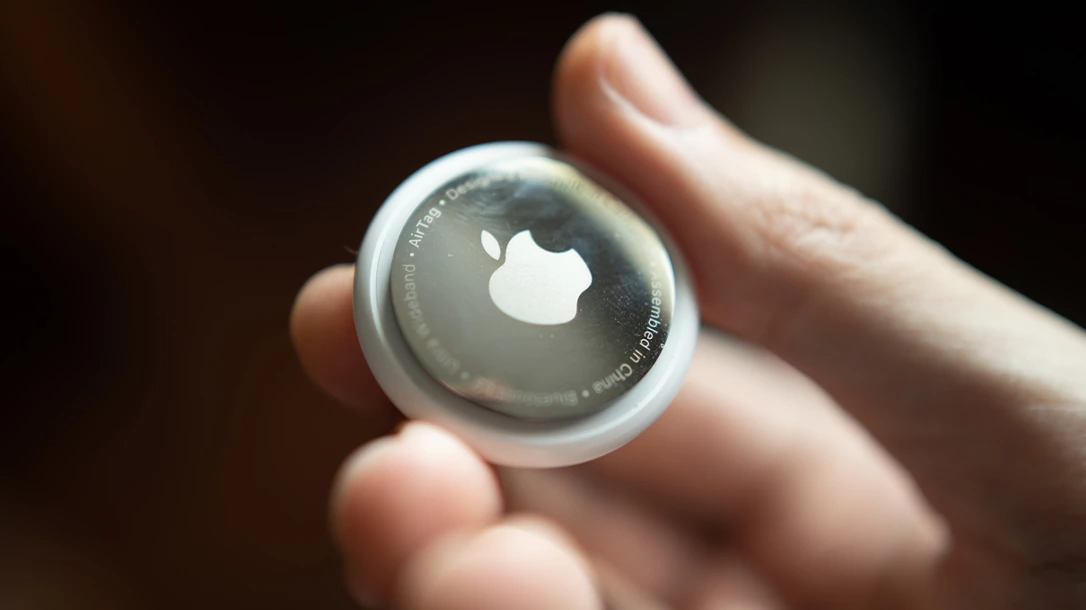The world is more connected than ever, and digital awareness is crucial in navigating this landscape. Our smartphones aren’t just communication devices—they hold our personal data, track our movements, and act as digital keys to our finances, homes, and social lives. While this convenience has benefits, it also exposes us to new vulnerabilities.
In 2025, digital awareness is about more than just strong passwords—it’s about understanding how to protect your information, manage digital footprints, and avoid emerging threats. Below, we’ll explore how to strengthen your digital defenses, leverage security apps, and practice digital situational awareness in an era where data privacy is a constant battle.

Understanding Digital Situational Awareness
Situational awareness in the real world is about being aware of what’s happening around you to avoid danger. The same principle applies to digital spaces. Just like you wouldn’t walk through an unfamiliar city staring at your phone, you shouldn’t navigate the internet blindly.
Here’s how to apply situational awareness to your digital life:
1. Know What Data You’re Sharing – Apps, websites, and even phone settings can leak data. Many free apps collect location data, browsing history, and personal details—sometimes without your consent.
2. Question Every Digital Interaction – Cyber threats often come disguised as legitimate messages. If you receive an unexpected text, call, or email, verify it before clicking on anything.
3. Be Wary of Public Wi-Fi – Public networks are prime targets for data interception. Always use a VPN when connecting to public Wi-Fi to encrypt your data and prevent tracking.
4. Understand Digital Tracking – If your Bluetooth, Wi-Fi, or location settings are always on, your phone is constantly broadcasting signals. Turn these off when not in use.
The goal is to be intentional with your digital habits—just like being alert in a physical environment makes you less vulnerable to threats, being aware of your digital surroundings reduces your attack surface.
Your Greatest Asset & Your Biggest Risk
Your smartphone is one of the most powerful self-defense tools you have, but it can also be a major liability if compromised. Attackers don’t need to physically steal your device to access your sensitive data—phishing attacks, malware, and poor security settings can all leave you vulnerable to remote exploitation.
To protect yourself, enable Two-Factor Authentication (2FA), but opt for authenticator apps like Google Authenticator or Authy instead of text-based 2FA, which can be intercepted. Secure your lock screen with a strong passcode and biometric authentication (such as Face ID or fingerprint), and limit sensitive notifications from displaying on your lock screen.
Disable unused features, such as Bluetooth, location services, and Wi-Fi scanning, when not in use to reduce tracking risks and potential security exploits. Be cautious of fake apps by only downloading from official app stores and reviewing permissions—if a simple flashlight app requests access to your contacts, it’s a red flag. Finally, keep your phone updated as software updates patch critical security vulnerabilities. If your device is no longer receiving updates, it may be time to upgrade for better protection.
Self-Defense & Security Apps
In the context of personal safety, your phone can act as an early warning system, emergency beacon, and recording device. The right apps can help you stay aware, communicate your location, and provide evidence if needed.
Best Apps for Digital Self-Defense
1. Noonlight – Sends silent distress alerts to law enforcement with GPS tracking if you’re in danger.
2. Silent Beacon – Works as a panic button, alerting emergency contacts and law enforcement.
3. GeoZilla – A family locator with real-time tracking, geofencing alerts, and emergency notifications.
4. Haven (by Edward Snowden) – Uses your phone’s sensors to detect motion, sound, or changes and alerts you to potential tampering.
5. Bouncer – Temporarily grants app permissions (like location or camera access) instead of always-on tracking.
6. 1Password or Bitwarden – Secure password managers that generate and store strong passwords, reducing your vulnerability to credential theft.
The goal isn’t to be paranoid—it’s to have security layers in place. Even if you never need them, being prepared is always better than being caught off guard.

Tracking Devices:
Devices like Apple AirTags, Tile, and Samsung SmartTags are great tools for tracking lost items, but they can also be misused for stalking or unauthorized tracking. Fortunately, both Apple and Android have built-in features to detect unknown AirTags that are moving with you. If you receive an “AirTag detected” notification, take it seriously and investigate immediately. You can also proactively check for hidden trackers using the “Scan for Devices” feature in Apple’s Find My app or Android’s Tracker Detect.
If you suspect tracking, conduct a physical inspection of your belongings, including your car, bag, and clothing, to look for hidden devices. If you do find an unknown tracker, remove its battery to disable it and report it to the authorities. Be cautious if you discover a tracker while away from home; avoid going directly to your residence. Instead, contact authorities from a public location and request an escort to ensure your home is also free of unwanted devices. Staying vigilant and knowing how to detect these threats is essential for maintaining personal security.
Protecting Your Household
It’s not just about securing yourself—your entire household’s digital security needs to be considered. Many security breaches happen through family members who may not be as cautious.
Family Digital Security Checklist
1. Teach Kids About Digital Risks – Have a conversation about social media oversharing, phishing scams, and safe online behavior.
2. Set Up Family Location Sharing (With Limits) – Use Find My iPhone or Google Location Sharing, but ensure only trusted family members have access.
3. Use Parental Controls & Content Filters – Apps like Bark, Qustodio, and Google Family Link can monitor online activity without being invasive.
4. Secure Smart Home Devices – Change default passwords on smart locks, cameras, and home assistants (e.g., Alexa, Google Home) to prevent hacking.
5. Have a Family Emergency Plan – If a family member loses access to an important account or phone or gets locked out of an app, have backup solutions ready.
What to Watch For in 2025
Cybercriminals are becoming more sophisticated, and new digital threats emerge every year. One growing risk is SIM swapping attacks, where hackers impersonate you to convince your mobile carrier to transfer your phone number to their device. Once they gain control, they reset your passwords and take over your accounts, often bypassing two-factor authentication.
Another rising threat is QR code scams—fraudulent QR codes that redirect unsuspecting users to phishing sites or install malware on their devices. To stay safe, always verify the source before scanning a QR code, especially if it appears in an unexpected location.
Public USB charging stations also pose a hidden danger known as “juice jacking.”Cybercriminals can compromise these stations to steal your data or install malware on your phone. To protect yourself, use a USB data blocker or bring your own power brick to charge safely.
Finally, deepfake scams are becoming increasingly convincing. AI-generated videos and voice clones are now being used for identity fraud, blackmail, and misinformation. If you receive a video call or voice message from an unknown source—or even a familiar contact behaving suspiciously—be cautious and verify their identity through an alternative method.
Staying informed about these threats and taking simple precautions can help you avoid falling victim to the latest cyber scams.

Keeping Your Phone Secure
Having security apps is important, but true digital security is a daily habit. Just like you wouldn’t leave your front door unlocked at night, you shouldn’t leave your phone vulnerable, either. A few small changes in how you use your phone can massively improve your security.
The first line of defense is your lock screen. A strong passcode (at least six digits) is essential, even if you use biometrics like Face ID or a fingerprint scanner. Disabling lock screen notifications for texts, emails, and banking apps prevents sensitive information from being exposed if someone picks up your phone and accesses it.
App Permissions
Another critical habit is managing app permissions. Many apps request access to your microphone, camera, location, and contacts—even when they don’t need it. Regularly reviewing these permissions in your settings allows you to limit unnecessary data collection. Social media apps, in particular, are notorious for tracking location in the background, so turning off these settings can improve both privacy and battery life.
When it comes to messaging, encryption is key. Standard SMS messages are not secure and can be intercepted. To keep your conversations private:
Use Signal, WhatsApp, or Telegram (Secret Chats only) for end-to-end encryption.
Enable disappearing messages for sensitive conversations.
Regularly delete old messages that contain personal information to maintain data privacy.
Location Settings
Location tracking is another area where many people unknowingly expose themselves. While it’s useful for navigation and safety apps, it can also be a privacy risk. Instead of leaving location tracking on all the time:
Manually check-in rather than broadcasting real-time movements.
Restrict background tracking in apps that don’t need it.
Use trusted tracking apps (such as Life360), but set them up securely and limit who can view your location.
Public Wi-Fi is convenient, but it’s also one of the easiest ways for hackers to intercept your data. If you must use public Wi-Fi:
Avoid logging into banking apps or accessing sensitive accounts.
Use a VPN (like NordVPN, ExpressVPN, or ProtonVPN) to encrypt your internet traffic.
Turn off auto-connect to prevent your phone from automatically joining unsecured networks.

Update Often
Keeping your software updated is one of the simplest yet most effective ways to protect your phone. Outdated software contains security vulnerabilities that hackers can exploit; therefore, enabling automatic updates for your phone’s operating system and security patches is an easy yet essential habit.
Finally, backing up your data ensures that if your phone is lost, stolen, or hacked, you won’t lose everything.
Use cloud backups (such as iCloud or Google Drive) for storing photos, documents, and contacts.
Keep a local backup on an external hard drive for extra security.
By making small yet consistent changes in how you use your phone, you can significantly reduce your digital footprint and enhance your overall security. These habits don’t take much time but can make all the difference in protecting your data from threats both online and offline.
The Mindset Shift in Digital Security
Staying secure isn’t about downloading the latest app or buying a privacy gadget—it’s about developing a mindset of awareness. Being proactive rather than reactive is key; take control of your settings, regularly check permissions, and audit your digital habits to minimize risks. Educating yourself and your family about digital threats ensures you’re less likely to fall victim to scams, hacking attempts, or tracking.
Always think before you click—whether it’s a suspicious link, an unfamiliar Wi-Fi network, or a random friend request, taking a moment to verify can prevent serious security breaches. Digital self-defense isn’t just for experts; it’s something anyone can implement. In 2025, your phone serves as the gateway to your private life, and the more intentional you are with security, the more difficult it becomes for malicious actors to compromise it.
Stay aware. Stay safe. And stay in control.






















